Introduction.
The History of a country or a society is written on the basis of archaelogical evidences and not on beliefs. As a result, Shri Ram, sadly, due to the lack of any scientific evidence is at times called as mythological personality. This undoubtedly causes distress to millions. If we rely only on faith, and do not look for scientific evidence we will be doing grave injustice to a great personality who walked through the Indian jungles obeying his father’s dictat, helping Rishis and giving justice to many. He was truly an epitome of Virtue and inspired billions over many generations.
Although one can go on and on to explain and justify his existence that ; Shri Ram’s description exists in Puranas etc , the places related to Shri Ram’s life as described in Valmiki’s Ramayan exist even now, but they cannot be considered as scientific evidence . The fiction writers also use the names of streets and cities as they exist but the characters they mention in their novels do not exist in real life.
So, after hundreds and thousands of years of destruction caused by floods, earthquakes and invasions, gathering evidence which may stand the test of science relating to Shri Rama’s life would be very difficult, BUT NOT IMPOSSIBLE.
Notwithstanding the above, a dedicated team of researchers can still find him because ;
“Nobody believed that Homer's Iliad was a true story till Troy was discovered after extensive archaeology.
So we should not stop the quest and rather work with a scientific aptitude and doggedly to look for evidence.
Can Astronomical evidence work .
Some astronomers have identified the approximate time of the Ramayana by the description of the stars and constellations as given in the Ramayana, or even in the Bhagavata Purana and other texts. One such Book is written by Mr Pushkar Bhatnagar, titled ; Dating the Era of Lord Rama.
He claims that there is a significant amount of astronomical evidence available to prove that Rama was a historical personality. He says, “Valmiki, who wrote the Ramayana, was a contemporary of Rama. While narrating the events of the epic, Valmiki has mentioned the position of the planets at several places, which can easily be verified using software. Since the planetary configurations do not repeat for hundreds of years and cannot be manipulated or imagined so accurately, without the help of sophisticated software. The inference that one can draw is that someone was present there to witness the actual happening of these configurations, which got recorded in the story of Rama."
Mr Bhatnagar provides the following quote from the Ramayana: “Rama was born on the Navami tithi of Shukla Paksha of Chaitra masa (9th day of the increasing phase of the moon in the lunar month of Chaitra). At that time, the nakshatra was Punarvasu, and Sun, Mars, Saturn, Jupiter and Venus were in Aries, Capricorn, Libra, Cancer and Pisces respectively. Lagna was Cancer and Jupiter & Moon were shining together. — Ramayana 1.18.8,9
He claims that By using a powerful planetarium software, he found that the planetary positions mentioned in Ramayana for the date of birth of Shri Ram had occurred at around 12.30 p.m. of 10th January 5114 BC. It was the ninth day of the Shukla Paksh of Chaitra month too. Moving forward, after 25 years of the birth of Shri Ram, the position of planets in the sky tallies with their description in Ramayana. Again, on the amavasya (new moon) of the 10th month of the 13th year of exile the solar eclipse had indeed occurred and the particular arrangement of planets in the sky was visible. ( Date comes to 7th October, 5077 BC). Even the occurrence of subsequent two eclipses also tally with the respective description in Valmiki Ramayana. (Date of Hanumanji’s meeting Sitaji at Lanka was 12th September, 5076 BC). In this manner the entire sequence of the planetary positions gets verified and all the dates can be precisely determined.”
The date of war 5114 - 39 = 5075 BC
But even this does not become scientific evidence because may be Valmiki an astronomer himself in order to make his story appear true used these constellations.
However, this can be used as perhaps circumstantial evidence .
So, what could serve the purpose? If we are able to lay hand on one of the following items related to Shri Ram, I think it would make our task easier;
- Sitaji’s Chudamani that she gave to Hanumanji as an evidence.
- The ring that Shri Ram gave to Hanumanji to give it to Sitaji on which Ram was written.
- The Metal parts of weapons that were used by the two armies that could be found in the area where battle was fought for days.
- The metal parts of chariots that were used by Ravana.
- Some rock inscriptions of that era describing the war.
- Sitaji’s ornaments that Sugreev showed Shri Ram.
- The skeletons of soldiers who fought in that war might be found in the largely virgin jungles of Srilanka.
Locating Evidence.
A civilization cannot suddenly burst into advanced writing. So, One needs to look at various sources of history to re-build it. Especially when looking at ancient history. Thence Puranas, Mahabharat etc which describe the existence of Shri Ram AND WRITTEN IN DIFFERENT TIMES are surely a circumstantial evidence. Because all these texts indicate that the Ramayana is geographically very correct. Every site on Shri Rama's route is still identifiable and has continuing traditions or temples to commemorate Rama's visit.
Hundreds of years ago, no writer had the means to travel around the country inventing a story and thereafter fitting it into local folklore. Yes, those sites might have got the importance subsequently like it happened in case of Jesus ; All those places associated with Jesus were identified once the Roman King adopted Christianity and his mother came down to Jerusalem looking for various artifacts and identify places linked to Jesus, almost after 40 years of his crucification .
Therefore, an argument that Shri Ram was not worshipped in Ashoka's times and came to be worshipped only in 10th century or so is a bogus one. Shri Ram was not a Saint or a Swamy who had started a sect or a Panth, obviously, it would have taken time for people to fathom and realise the enormity of his achievements, because he was a King and not a preacher..
There have been many researchers who have visited all the places that Shri Ram visited during his exile as mentioned in Valmiki’s Ramyana. One of them is Dr Ram Avtar.
I have also visited many sites associated with Shri Ram including the birthplace of Ravan. It is believed that Ravan was born at Bisrakh , now a small village near Greater Noida. There is still a small Shiv temple where it is beleived that Ravan's father was a priest.
Shiv Temple at Bisrakh , believed to be of Ravan's Father Vishravas . The name of this village - Bisrakh, it is said has been derived from ; Vishravas.
Below is the ancient Shivji's Temple where Ravan's father was believed to be the Priest.
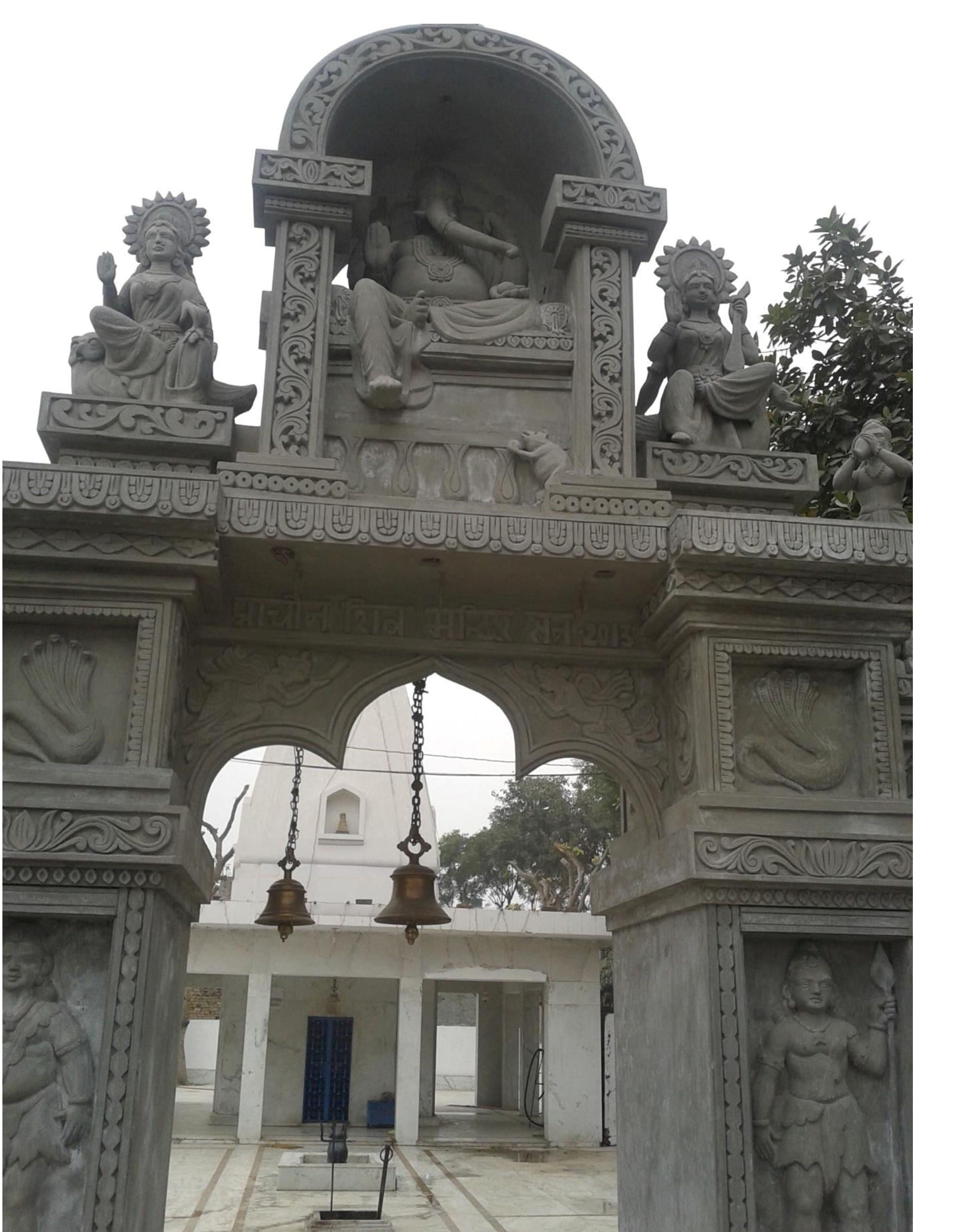
Dr Avtaar sequentially moved to all the places as stated in the Valmiki’s Ramayan. Starting from Ayodhya, he went right upto Rameshwaram and Srilanka . He found 195 places which still have the memorials connected to the events relating to the life of Shri Rama and Sitaji and the locals believe that Shri Rama had actually visited these places. Ayodhya Kand, Aranya Kand, Kishkindha Kand and Sunder Kand give in great details the account of these places which mostly included Rishi ashrams located along several river banks. These details can be divided into 5 phases.
1st Phase –Shri Ram went to Tamsa Nadi Tal (Mandah) – 20 km from Ayodhya, thereafter crossed Gomti river. Then they reached Ganges and entered Shringverpur (Singraur) which was kingdom of Nishadraj Guh and is famous for Kewat prasang (20 km from Allahabad). After crossing Yamuna near Sangam they reached Chitrakoot on UP and MP border - memorials include Valmiki Ashram, Mandavya Ashram, Bharat Koop etc. still exist. Thereafter they went to Atri Ashram located in Satana in MP.
All these places, although the locals believe that Shri Ram visited, but hardly anything worthwhile can be found.
2nd Phase in Dandak Van. Shri Rama travelled through this land of rivulets and water bodies and dense forests around MP and Chhatisgarh. They roamed around in Dandak Aranya area and visited several Rishi ashrams in MP and Chattisgarh areas, along Narmada and Mahanadi rivers for 10 years. Several memorials in Panna, Raipur, Bastar and Jagdalpur still exist which include Mandavya ashram, Shringi ashram, Ram Laxman Mandir etc. Thereafter, they REACHED Agastya ashram in Nasik. As per Valmiki, weapons made in Agnishala were given to Shri Rama by Agastya Muni in this ashram.
Once again nothing worthwhile can be found here also.
3rd Phase Shri Rama, Laxman and Sitaji travelled along Godavari. From Agastya ashram they went to stay in Panchvati. This place is famous for Shroopnakha episode . Nasik area is full of memorials; Sita Sarovar, Ram Kund and Triambakeshwar and Janasthan etc. , Sitaji was abducted by Ravana from here, who also killed Jatayu— memorial ‘Sarvatiratha’ in Taked Village, 56 km from Nasik, is still preserved.
Once again, none of the memorials can be termed as scientific evidence.
4th Phase along Tungbhadra and Kaveri. Shri Rama and Laxman extensively travelled through these areas in search of Sitaji. After meeting Jatayu they moved towards south to reach Rishyamook Parbat, in Hampi. Entire Sundarkand is based on this area. Enroute, they visited Shabari ashram in Pampasarovar area in Belgaon and is still famous for Ber trees. There is another Pampasarovar in Hampi which is also claimed to be Mata Sabrees’ ashram. This one makes sense as it is closer to Rishyamukh Parbat and Rishi Matang's ashram who was the Guru of Mata Sabree. Moreover, as it was Mata sabree who directed Ram to Hanuma/Sugreev who were residing close to her Ashram. After crossing forests of Sandalwood, gardens and water bodies, they went towards Rishyamook. Here they met Hanumanji and Sugreev, and were shown Sitaji’s ornaments. Shri Rama killed Bali in this area. Rishyamook and Kishkindha are located in Hampi, Distt. Ballari of Karnataka.
Shri Ram and Hanumanji have been in the folk lore for many centuries and one can see stories from Ramayan engraved in the columns of many temples of the Vijaynagar empire. There are also many memorials associated with Ramayan mentioned in Kishkindha Kand are located here ; Rishi Matang Ashram, Pampasarowar, Anjaniya Hill, Malyawant Ram temple etc.
But once again nothing worthwhile which can scientifically establish the existence of Shri Ram can be found here.
Ram Temple at Malyawant Hill ; Here on this Hill Shri Ram and Laxman spent the monsoons before proceeding to Lanka.
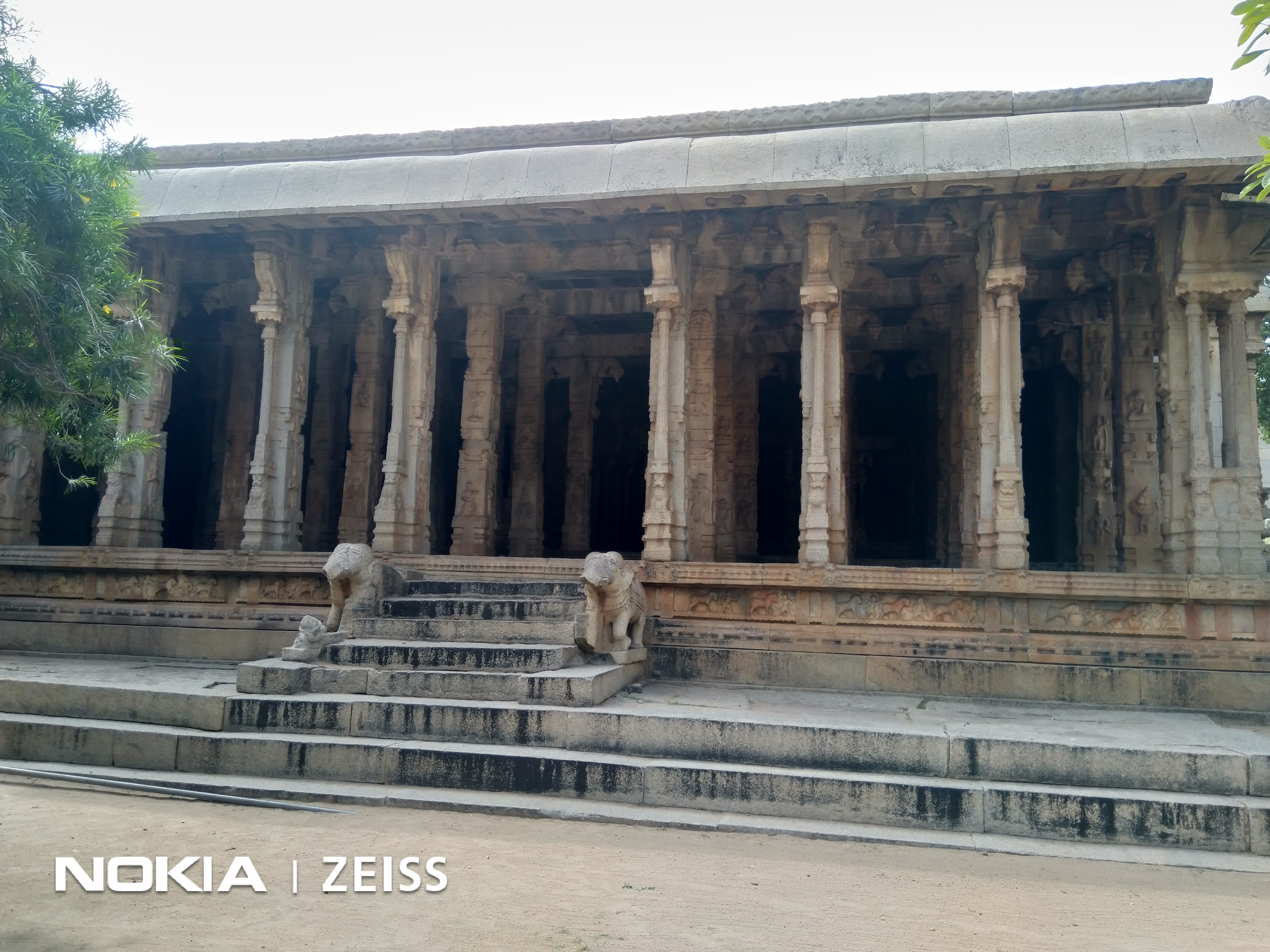
Rishi Matang's Ashram on Matang Hill.(Guru of Mata Sabree and the one who had cursed Bali, Sugreeb was hiding in a cave near this Hill)
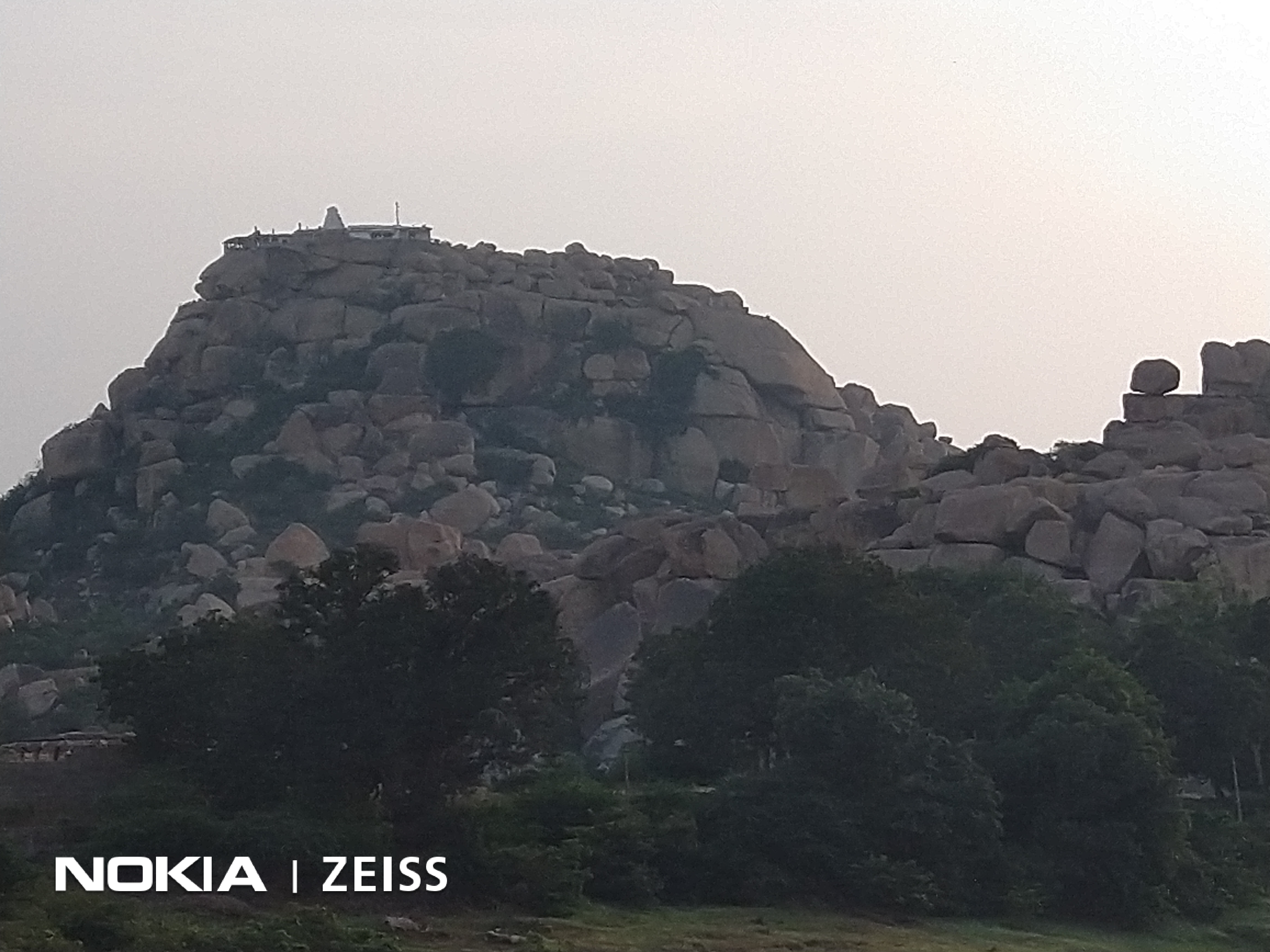
Anjananya Hill ; Birthplace of Hanumanji near Hampi
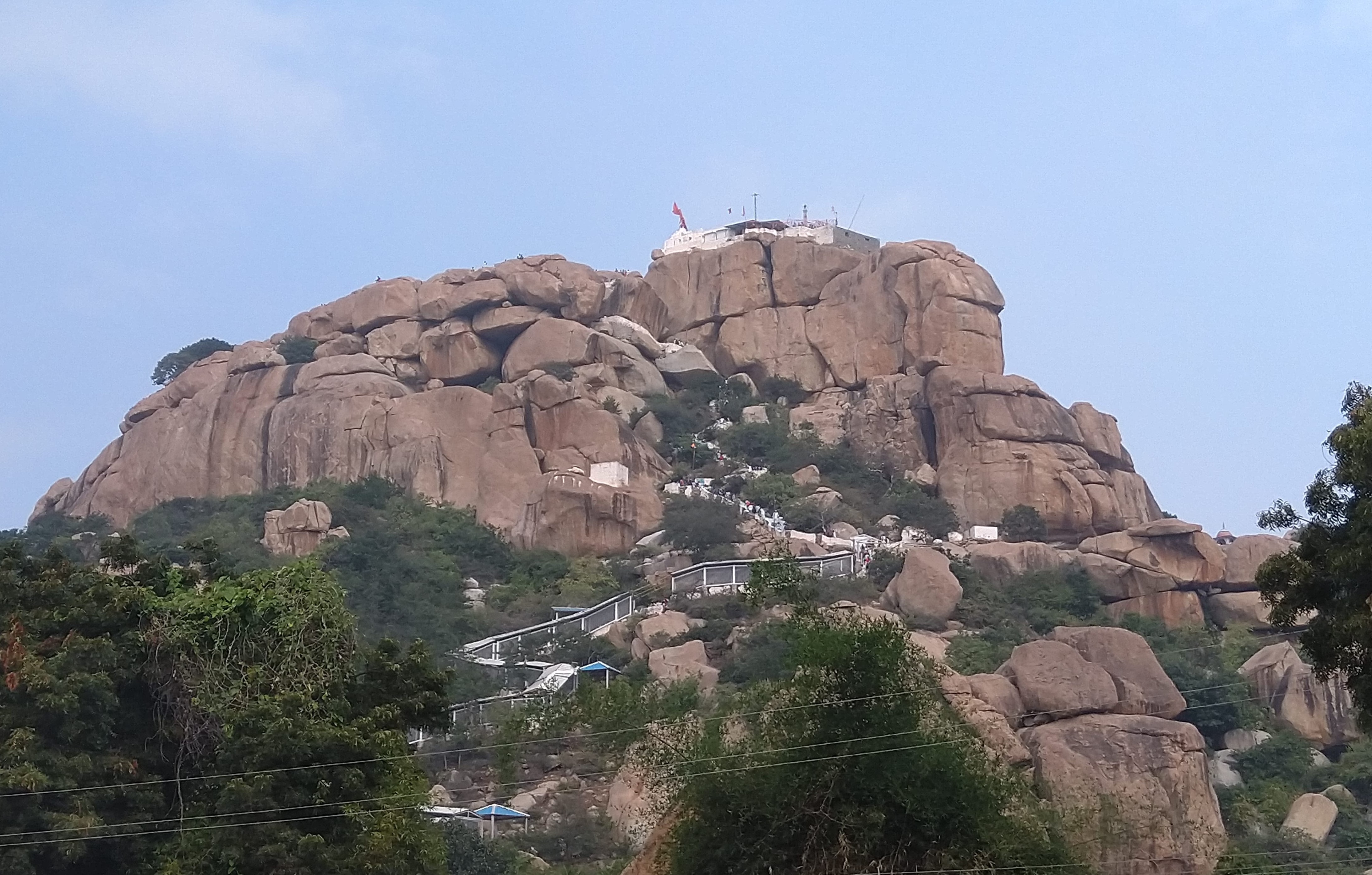
Pampasarovar where Mata Shabree Ashram is located ; She directed Shri Ram and Laxman towards Rishimookh Parwat where Sugreev was hiding. This is adjoining Rishi Matang's Ashram on Matang Hill.
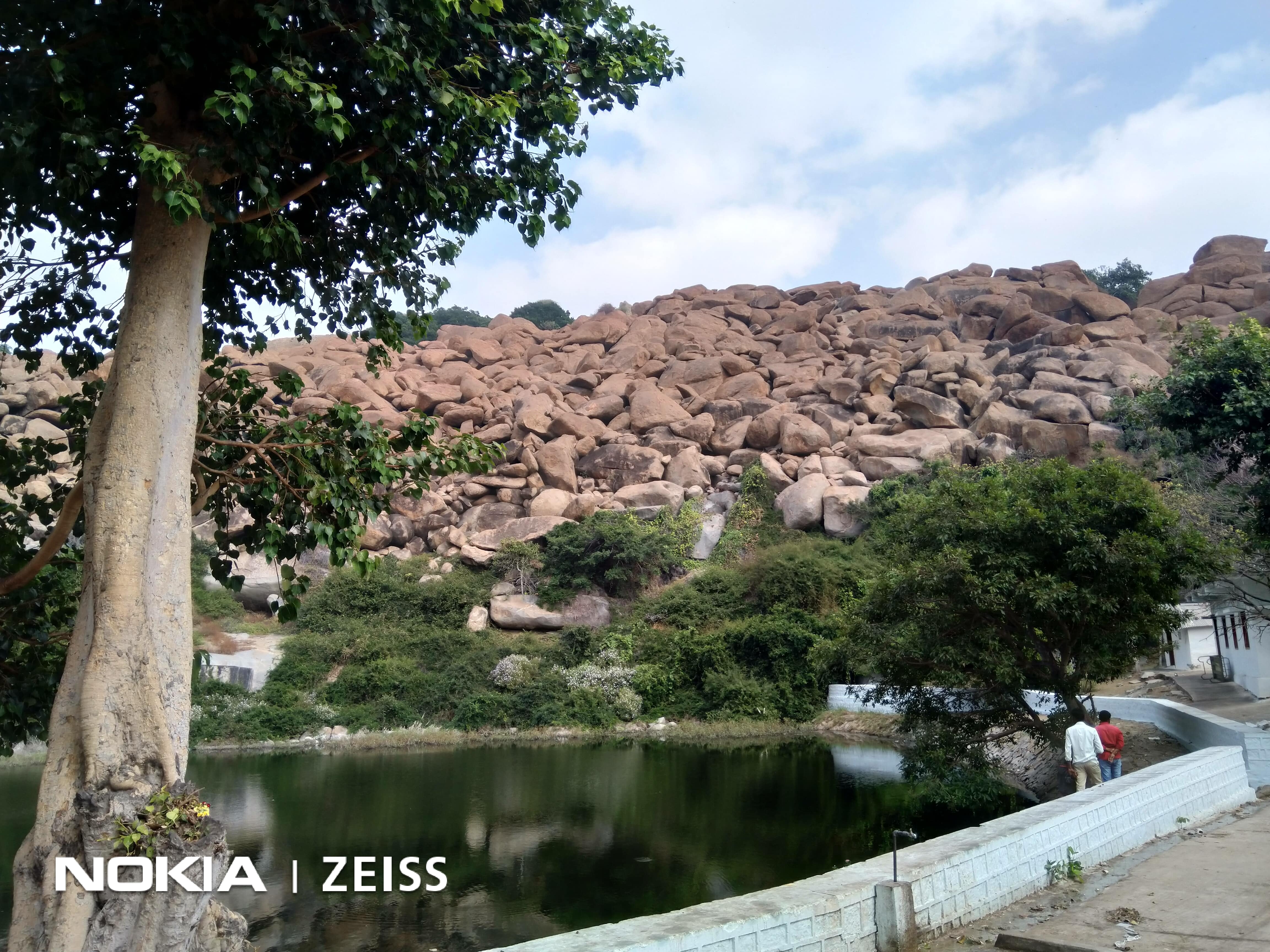
Sugreev Cave where Sugreev was hiding in fear of his brother Bali who was cursed by Rishi Matang.
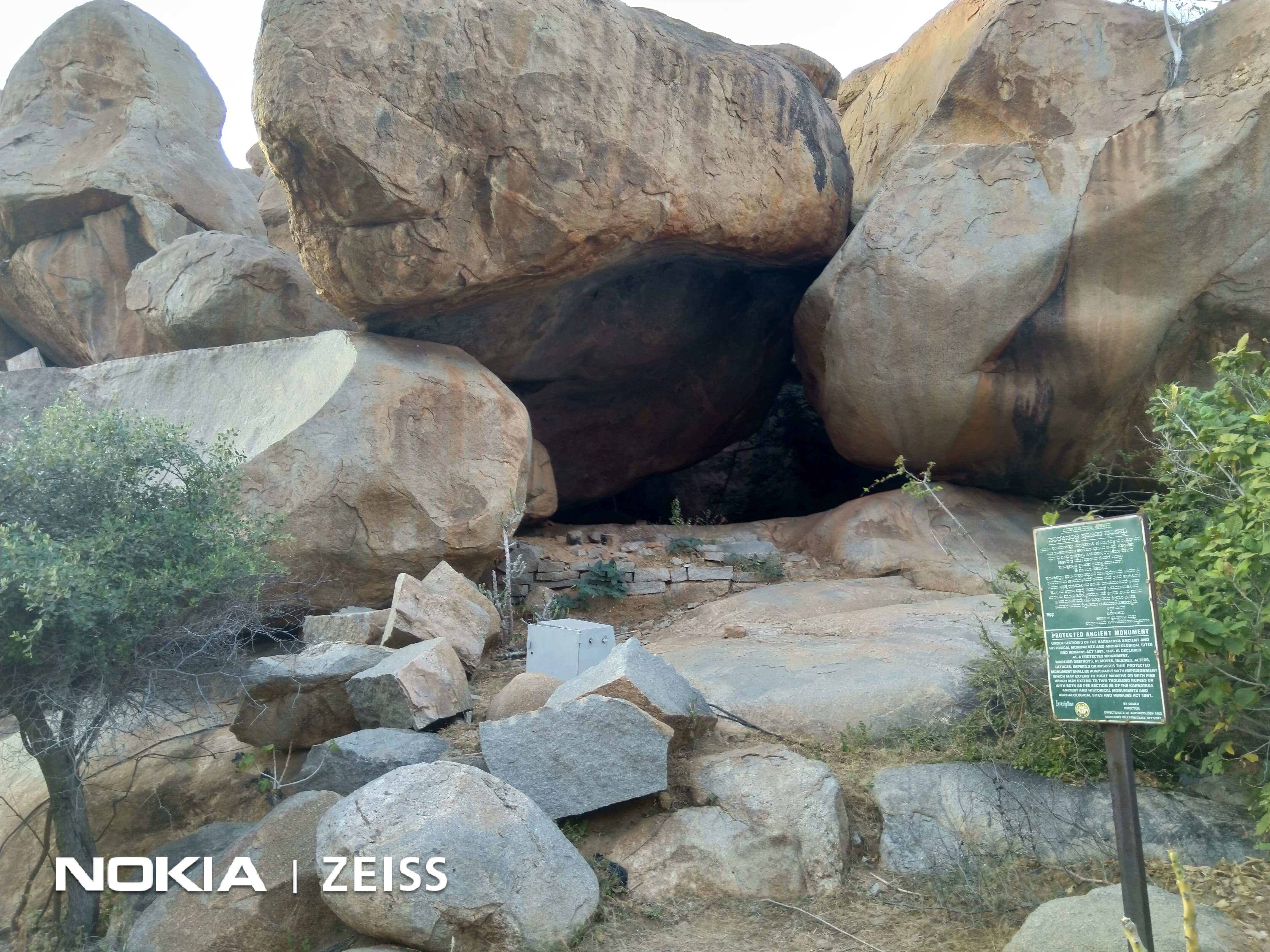
Hanumanji Burning Lanka engraved on a column of a temple located amongst the ruins of Vijaynagar Empire.
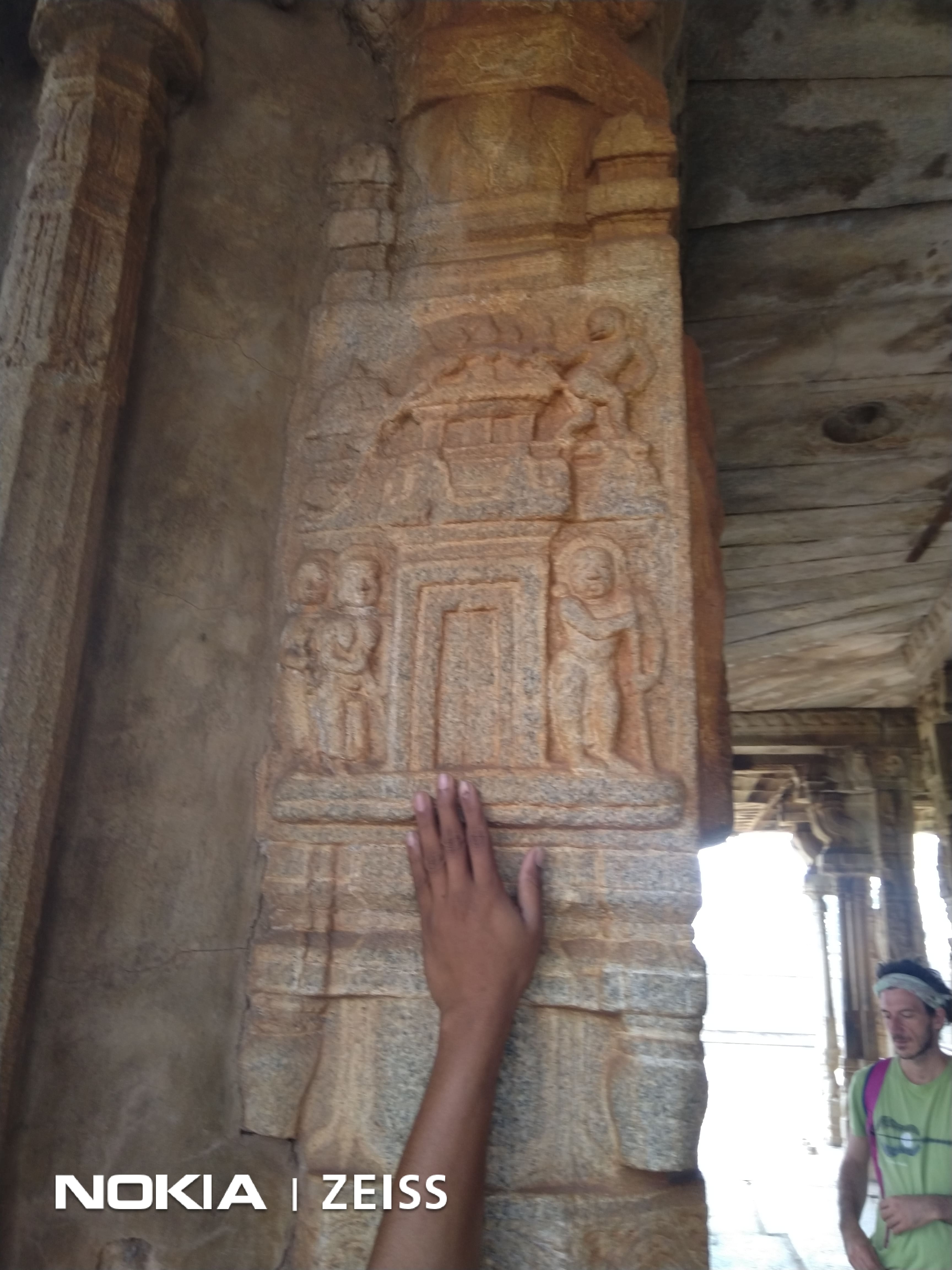
Ruins of Vijaynagar Empire and in the background is Rishi Matang's Ashram on the Hill.
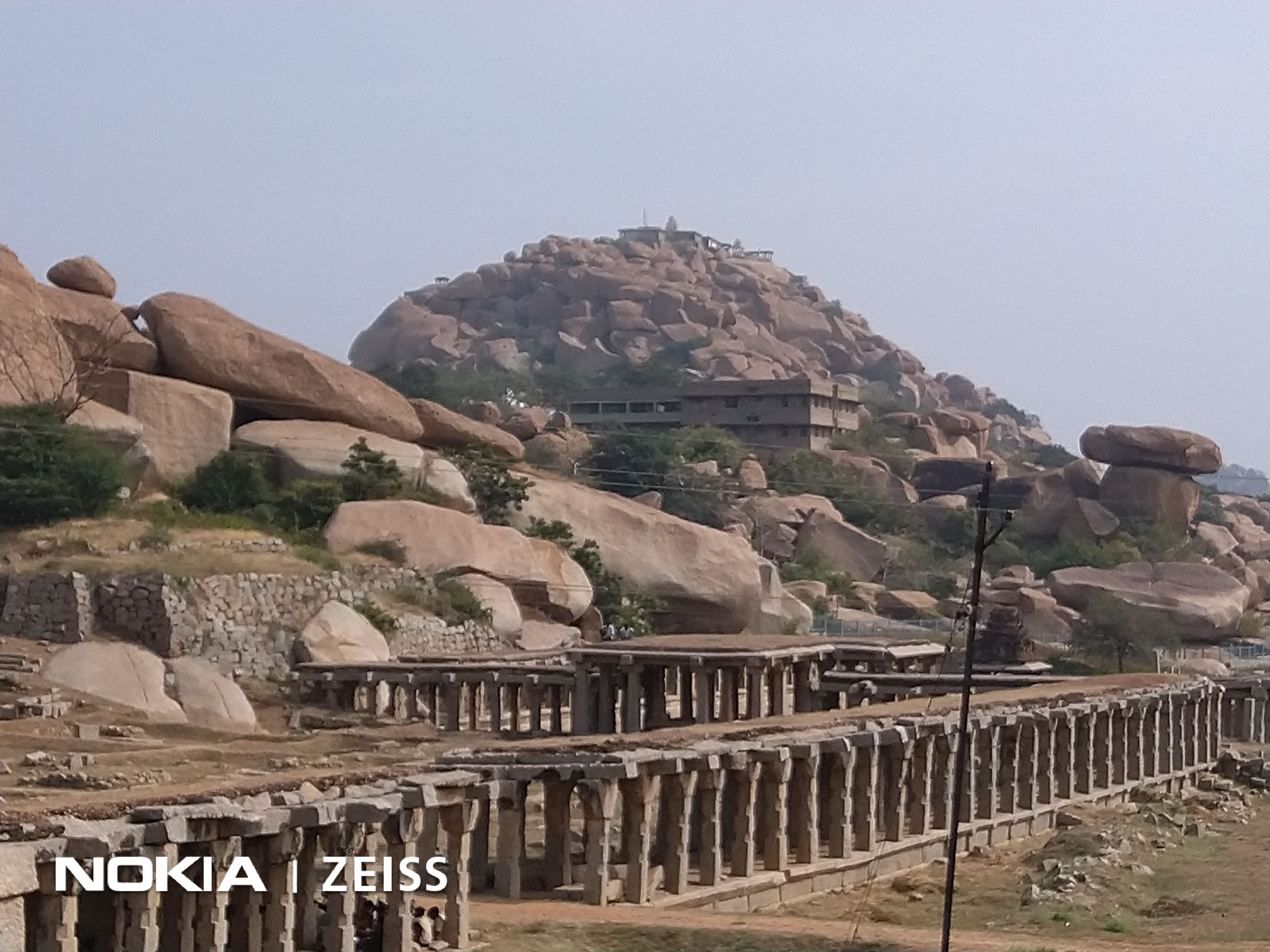
5th Phase In this Phase Shri Rama with his sena marched towards the sea, constructs the bridge and crosses the sea. Details of travel narrated in Valmiki’s Ramayan tally with the existing memorials. It is said that after surveying the place for three days, suitable area was identified and the bridge was constructed under the supervision of great shilpakar Nal. In Rameshwaram, particularly from Dhanushkoti, the boatmen still take visitors in boats to show remains of Shri Rama’s bridge, called as Ram Sethu, but it is considered fashionable to call it Adam’s bridge instead of calling it by its historical name i.e. Ram sethu.
But even this bridge is of little help as of now, till some scientific research proves that it is man made and gives us the date of its construction. Although there are many old maps available to show that there was a land link between Rameshwaram and Mannar but till the time we do not hear from scientists that the land link that is now submerged is man made , we can not use this as an evidence.
However, there is nothing to feel sad about it because there is Phase 6 , where , we can get lot of evidence, if we toil hard in specific areas as enumerated in subsequent paras.
Sixth Phase is the final Phase where Shri Ram crosses over to Lanka and fights a war. Srilanka therefore has a special significance in Ramayana. Valmiki has mentioned a few areas where Shri Ram stayed after crossing over in Yudh Kaand and also in Sundarkand. Lastly as Ravan is a revered king in Srilankan history and in some parts Vibhishan is also revered there are numerous places associated with both of them which are mentioned in the folklore of Lanka.
Although no archaeological evidence might have been found till now to prove the veracity of story as narrated by Valmiki but Srilanka was the land of two principal characters; Ravana and Vibishana of Ramayana and we can not undermine the importance of folk lores related to Ravan and Vibhishan in this part of the world.
Moreover, if nothing of archealeogical importance been found till now it is not necessary that It can never be found.
Srilanka has not witnessed the kind of invasions And destruction that India has faced and the jungles in Srilanka are pretty dense and largely unexplored , there is a strong probability of finding something in those jungles .
We must have a large heart and a strong will to search for evidence here in the areas as described below because if thousands of year old skeletons and fossils of animals have been found at several places in the world, we can surely lay hands on skeletons of soldiers or metal pieces of weapons used by soldiers of the two armies in Srilanka, provided we look for them in Right areas..
For this reason, It is important that we discuss the Places of Phase 6 of Ramayana (Shri Ram in Srilanka) in little more details and we may be able to find a few evidences of the battle that was fought thousands of years ago.
Ravana has gained more prominence in popular Sinhalese culture .
Sri Lankan lore has it that Sri Lanka was once ruled by the scholarly Ravana and it saw great advancements in science and medicine. The pushpaka vimana or the aeroplane which he flew is held as an example of great scientific achievements made during his regime while Ravana also holds a high position as a physician and it is said that he wrote seven books on Ayurveda . He is also believed to have authored Ravana Sanhita, an anthology of Hindu astrology, also invented a musical insturment ; Veena. His description as a ten-headed person, Daśamukha or Daśagrīva, is believed to be a reference to his vast knowledge and intelligence.
His Kingdom had mainly concentrated around the Eastern and Southern corners of the country and believed to have been lost to the sea with the years.
The Srilankans hold Ravan in such great esteem that they have named their first satellite as Ravana.
Now, how could Valmiki or Brahmins achieve this feat in Srilanka is unexplicabe.
The Advance to Ravana’s Kingdom
After crossing the Bridge Ram Sethu, Shri Ram would have landed at present day Mannar thereafter he had two options as Hanumanji would have given him clear idea of where Sitaji was kept ; A place now called as Seeta KOTUWA , she was subsequently shifted to Nuwara eliya after Hanumanji’s visit.
Option 1 ; Western approach - Mannar – Vankalai- Pomparippu-Puttalam-Wariyapola-Laggagala(this was the place where Ram’s army was sited first by Ravana) this comes to approx 336 kms.
Option 2 – Northern approach . Mannar – Mihintale-Laggala, this comes to approx 250 kms almost 80 kms shorter.
.
Clues from the Terrain.
As we look at the map and assess the sites/places that are associated with Ravan even in Sri lankan folk lore the following clearly stands out.
One. The Most important structure that can provide the evidence , is the RAM SETU, Believed to have been constructed by Shri Ram's army. The National Institute of Oceanography has now taken up this project of studying the Ram Setu scientifically and it is hoped in Next THREE YEARS we would get a Report.
Two. Any infantry advancing through an unknown enemy’s country would avoid to walk with a huge obstacle on one side, hence it is unlikely that Ram would have preferred to take option 1 and walked alongside Sea, hence he would have taken the northern approach i.e Option 2 as shown below. Using dense forest cover to hide his advancing force and moved Bound to bound i.e moving from one dominating feature to another one. and might have made one huge secured dominating feature as their Firm Base, from where they could send out the recce parties to assess the enemy's strenght and his deployment. Given the Range of weapons and equipment that they had , their Firm base should have been a dominating feature from where they could observe and protect their troops.
MAP 1.
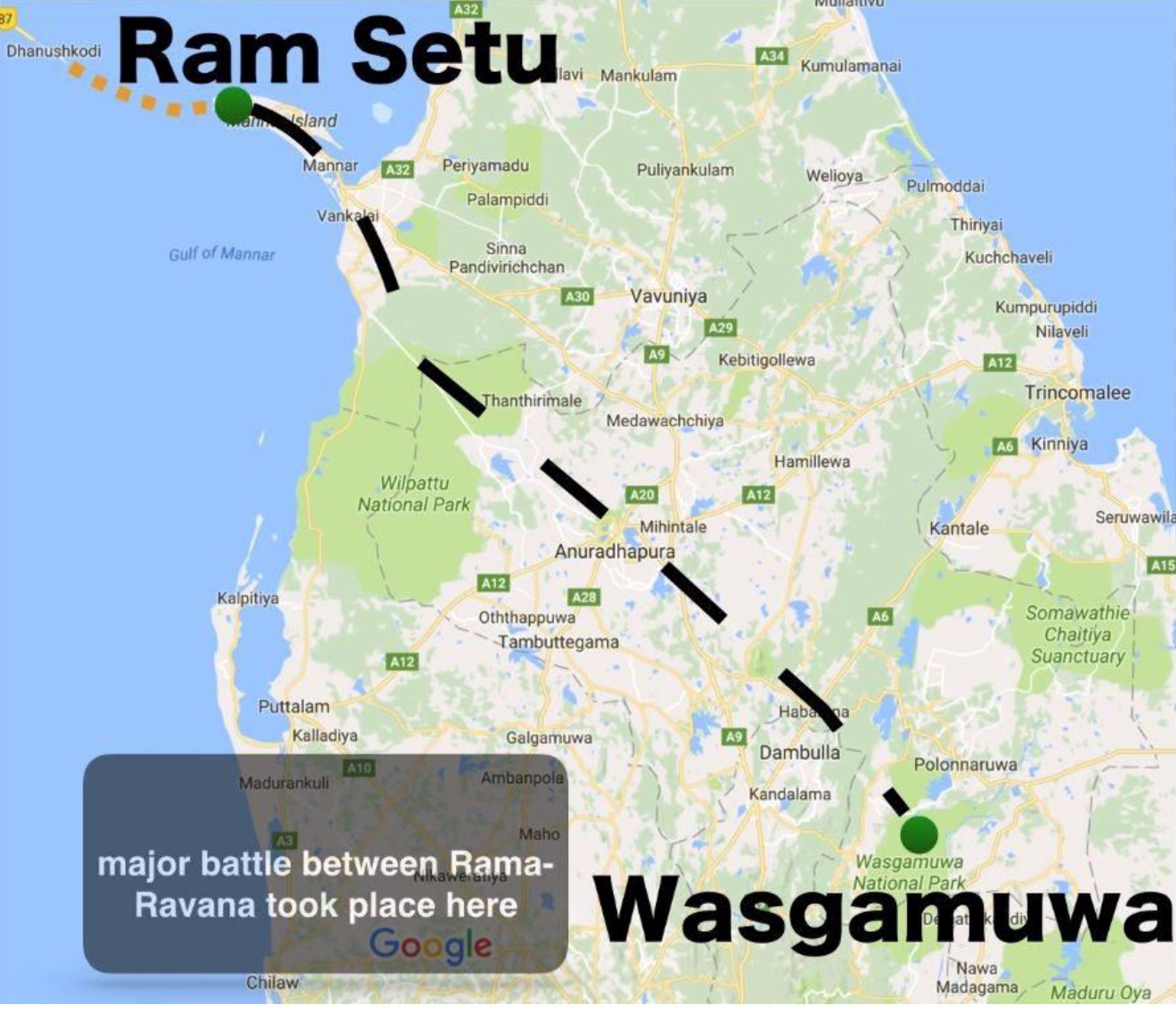
Three. The south-central part of Sri Lanka is a rugged high land that appears to be the heart of the country. The core of this area is a high plateau running north–south for approximately 65 kilometers. This area includes Sri Lanka's highest mountains ; Pidurutalagala is the highest at 2,524 m) At the plateau's southern end, the mountain ranges stretch 50 kilometers to the west toward Adam Peak (2,243 meters) and 50 kilometers to the east toward Namunakula .
Four. Thus these mountains would have served a natural def barrier as Hindukkush and Himalays served to Indian subcontinent. But the commercial centres must have been in plains down south. However, Ravan would have had big forts in the central portion of the plateau and sentry posts towards North on dominating heights. Moreover, in ancient times the size of Kingdoms used to be smaller, at times they used to be CITY KINGDOMS.
Five. From Mannar to Mihintale is approx 131 kms. The terrain till Mihintale is plain and Mihintale might be the first Dominating feature his army would have found.
This was also the Rock where once Prince Mahindra, Emperor Ashok’s son and Srilankan king Devanapiyatissa had met for the first time . It is quite likely that this rock had some importance even in 300 BC for the kings to meet and there were some stairs to climb the rock would have already existed.
To cover 131 kms , Shri Ram’s army should have taken atleast 4 days to reach Mihintale . and as they occupied a high ground after crossing over into the enemy territory , they must have felt secured and hence worthy of description in Valmiki’s Ramyan .
Hence can Suvel Parvat(Described in Valmiki’s Ramayan in Ramayan) be the same rock at Mihintale. At the foot of the mountain are the ruins of a hospital, medical bath (or stone canoe in which patients were immersed in medicinal oil) a stone inscription and urns belonging to the ancient period have been unearthed. This proves the ancient importance of the Rock.
However, in Ramayan(Yudh Kaand) there is a description that Shri Ram could see the lights of Ravan's palace from Suvel Parvat where Ravan's dancers adored with precious jwellery were performing on such a huge feature which appeared to be Touching the sky.
In that case , Mihintale does not fit into the scheme of things. So, we need to go further ahead.
Six. Very important to note is - Wasgamuwa National Forest in Sinhala stands for Battlefield and is believed to be the place where Ram - Ravan war was fought .
This is the plain area on the northern tip of the mountainous terrain.
Certianly Ravan would not have allowed Shri Ram to enter his kingdom deep enough into his territory. Rather No defender allows the enemy to enter his territory.
This indicates that Ravan’s army fought Shri Ram’s army somewhere very close to the border of his kingdom.
This also implies that Ravan's kingdom was around this Hilly region and down further South.
Seven. When we correlate the folk lores related to Ravan in Srilanka WITH the places/ sites that are associated with him we can surely form a general lay out of Ravan’s kingdom. Thence lets have a look at such places/ sites One by one.
A. Ritigala .
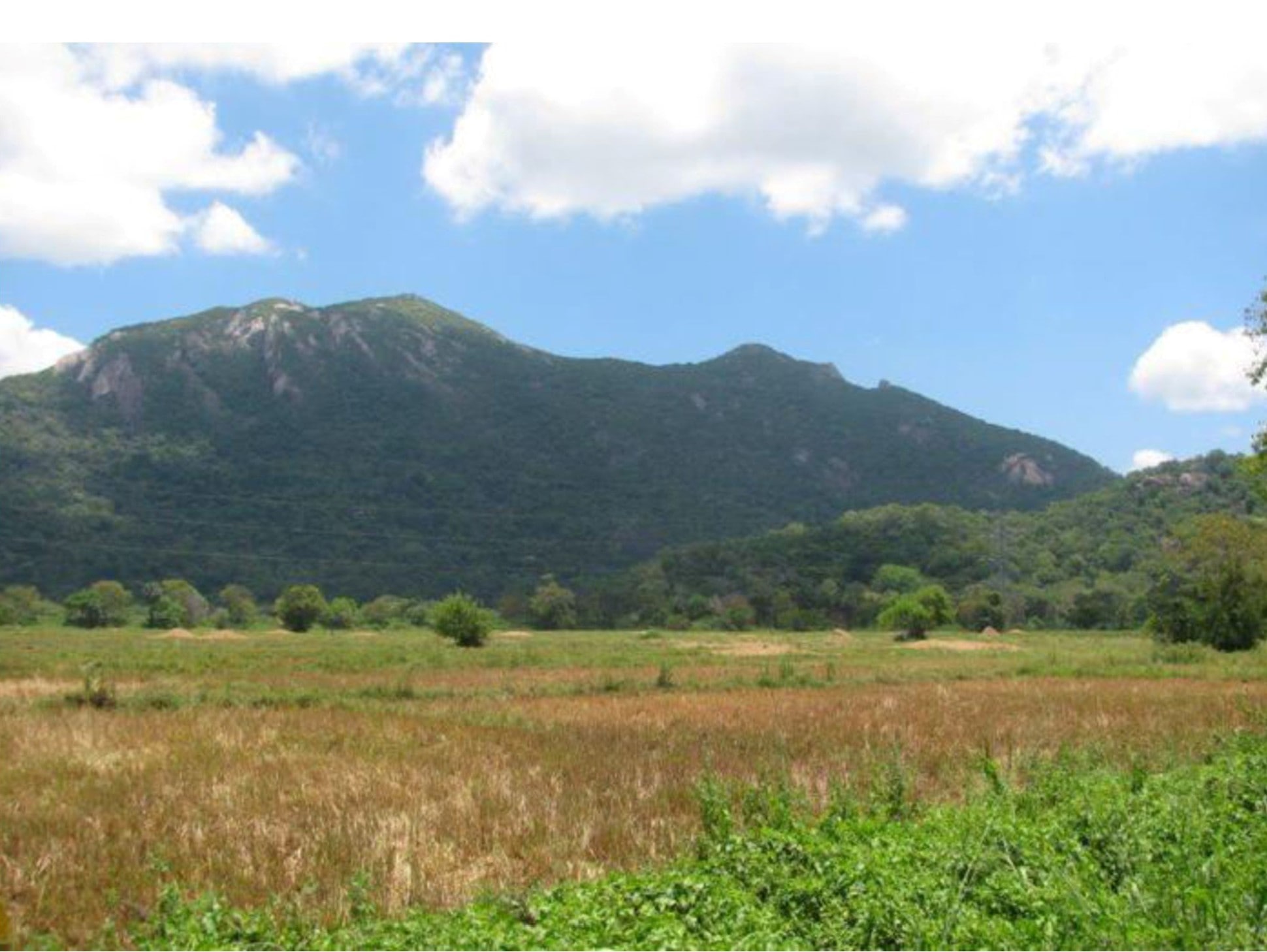
- This is the Highest Hill in Northern srilanka. It is approx 2153 feet and almost 6 kms in length. It is 156 kms from Mannar.
- According to popular belief, Hanumanji traveled over Ritigala, and, by accident, dropped a chunk off a mountain which had medicinal herbs of the Himalaya range he was carrying from India to Lanka.
- Astonishingly, There is a pocket of vegetation of healing herbs and plants at the strange mini-plateau at the summit of Ritigala, which is distinct from the dry-zone flora of the lower slopes and surrounding plains at Ritigala.
- One of mysterious aspect is the belief of powerful medicinal herbs found near the crest. A herb called “Sansevi” is believed to have the power of conferring long life and curing all human pain. According to legend, all vegetation on Ritigala is protected by Yakkas.
- Another folk lore about Ritigala is ; after Having found the location of Sitaji , Hanumanji made use of Ritigala as a launching pad to take a leap across to Kishkindha. Arishtgiri mountain is mentioned in Sundarkand from where Hanumanji took the flight back. So, whether Arishtgiri is the Ritigala or not can not be ascertained. Incidentally, Ritigala is the highest prominent hill between the central plains of Sri Lanka and the coast of southern India.
- However, In Buddhist literature Mahavamsa chapter 10 and 21 there is a mention of a mountain Arritha parvta which might have been called as Arisht giri by Valmiki. As per some in Srilanka- Ritigala was known by the name of “arittha-pabbata” during the reign of Pandukabhaya (377-307 BC), the third king of Sri Lanka.
- Suvel Parvat as per Valmiki’s Ramyan( Refer to Yudh Kaand) is the hill where Ram spent the night in Lanka. Lankapuri was visible from Suvel parvat and it appeared to be in the sky.
- So, this implies that Ravan's Lankapuri and the dancers' adoring precious jwellery at night should have been visible from Ritigala. It is a mountain in central Srilanka which is home to an ancient Buddhist monastery. The ruins and rock inscriptions of the monastery date back to 1st century BCE. It is located 43 km (27 mi) away from the ancient monastic city of Anuradhapura.
- Sigiriya Palace, is a magnificient Rock palace on a Huge rock , literally jutting into sky is approx 20-30 kms from RITIGALA. There are hardly any intervening features between Ritigala and Sigiriya and it is quite possible that Lights at night at Sigiriya Palace could be observed from Ritiagala.
9. So Ritigala may be the hill that could be the Suvela parvat of Valmiki where Shri Ram spent the night and saw the glittering lights of Ravan’s palace at Sigiriya which appeared to be touching the sky (Yudh Kaand Ramayan ). But Ritigala has been mentioned as Arisht or Arritha Parvat in two old texts ; Ramayan and Mahavamsa.
10. Sigiriya Palace is a world heritage site and Ritigala is a famous Buddhist Center.
11. Mannar to Ritigala is 156 kms and so Shri Ram's army would have taken atleast 5 -6 days to reach here.
12. Ritigala being a huge dominating feature, it could have served as a SECURED Firm base for the army that had travelled almost 150 kms into enemy's teritory. But because it is the Arishtgiri mountain, we have to over rule this as SUVEL PARVAT.
B. Sigirya ; Is A World Heritage Site (Refer to Map Below).
Add a comment